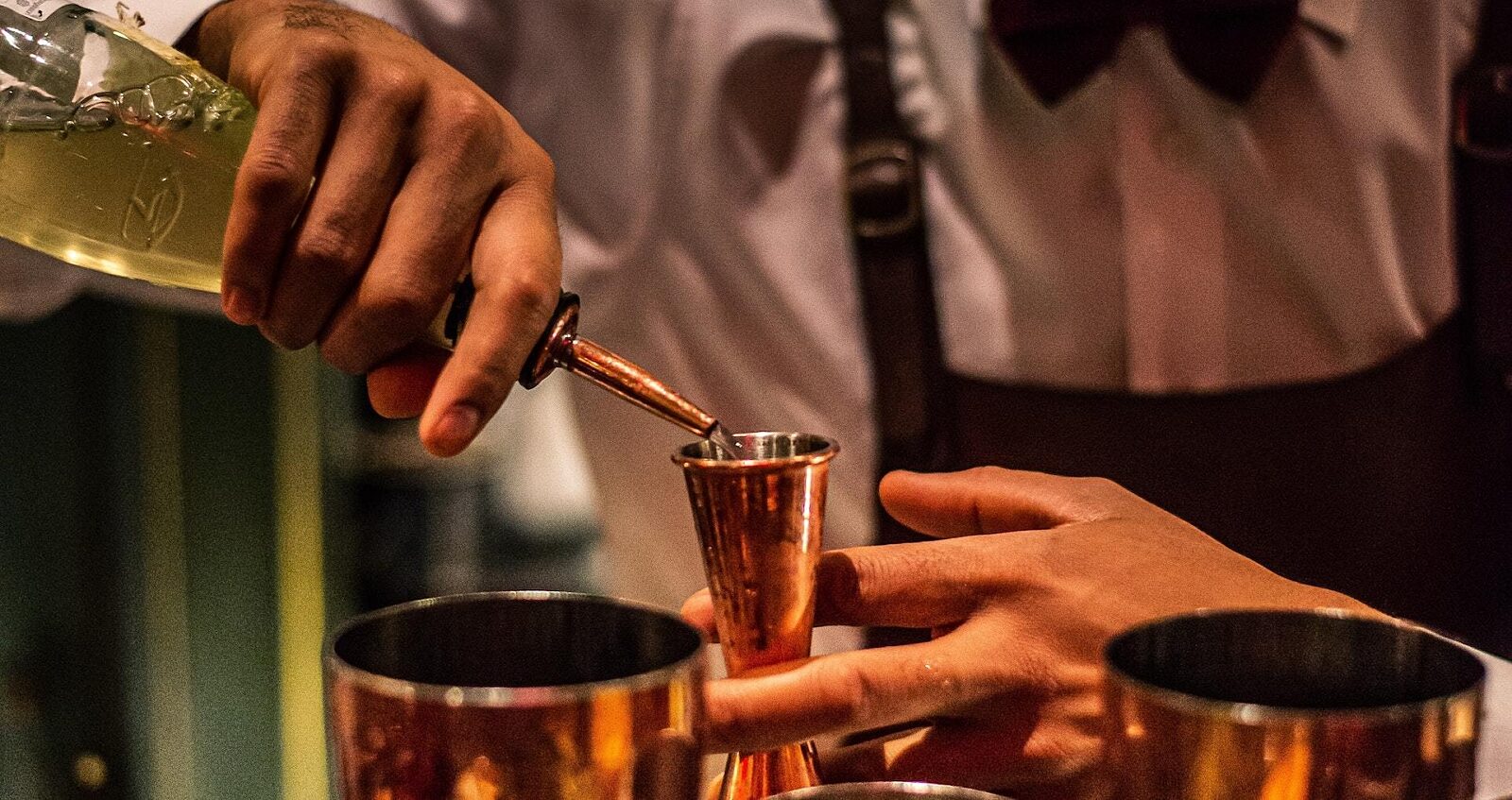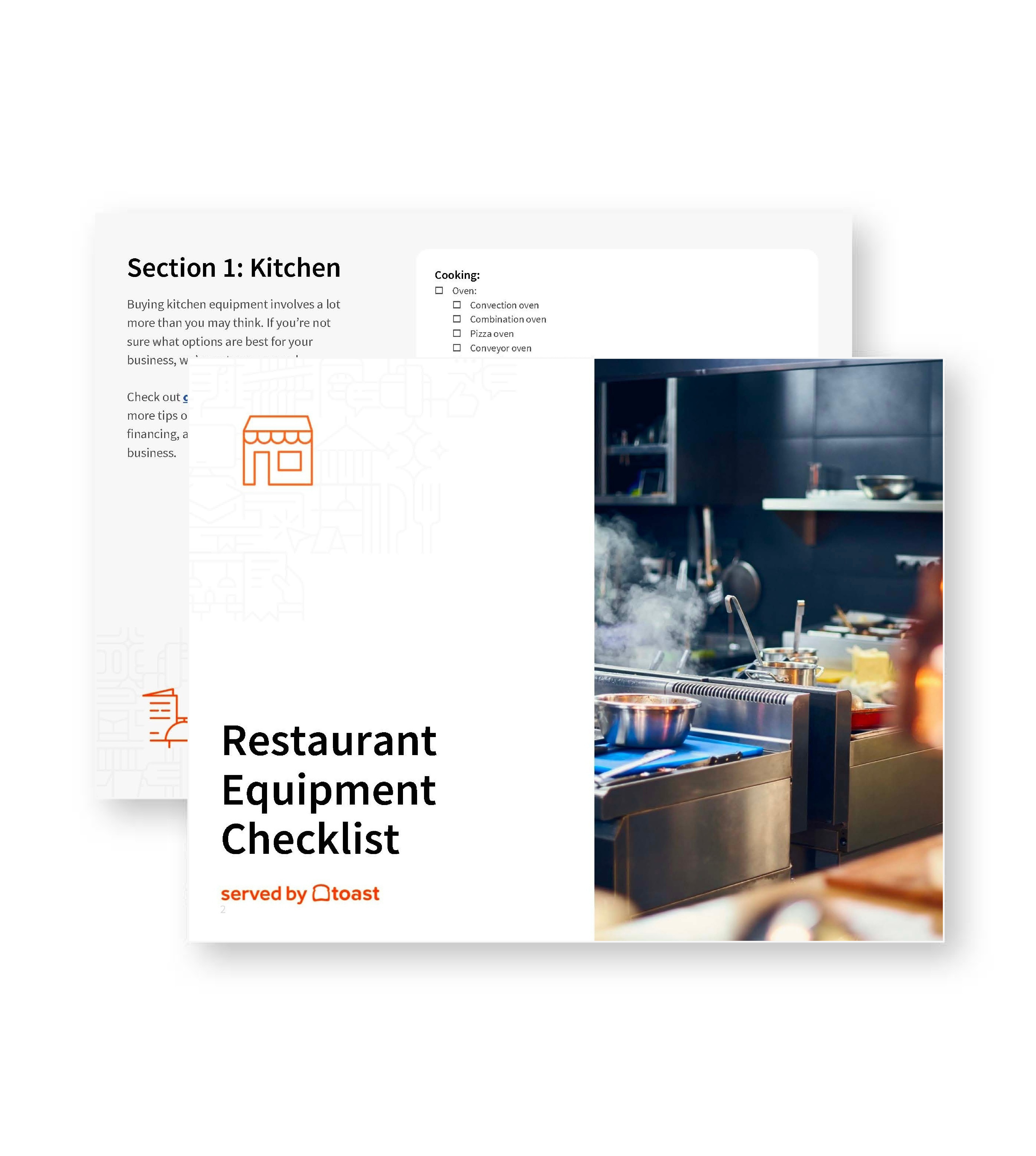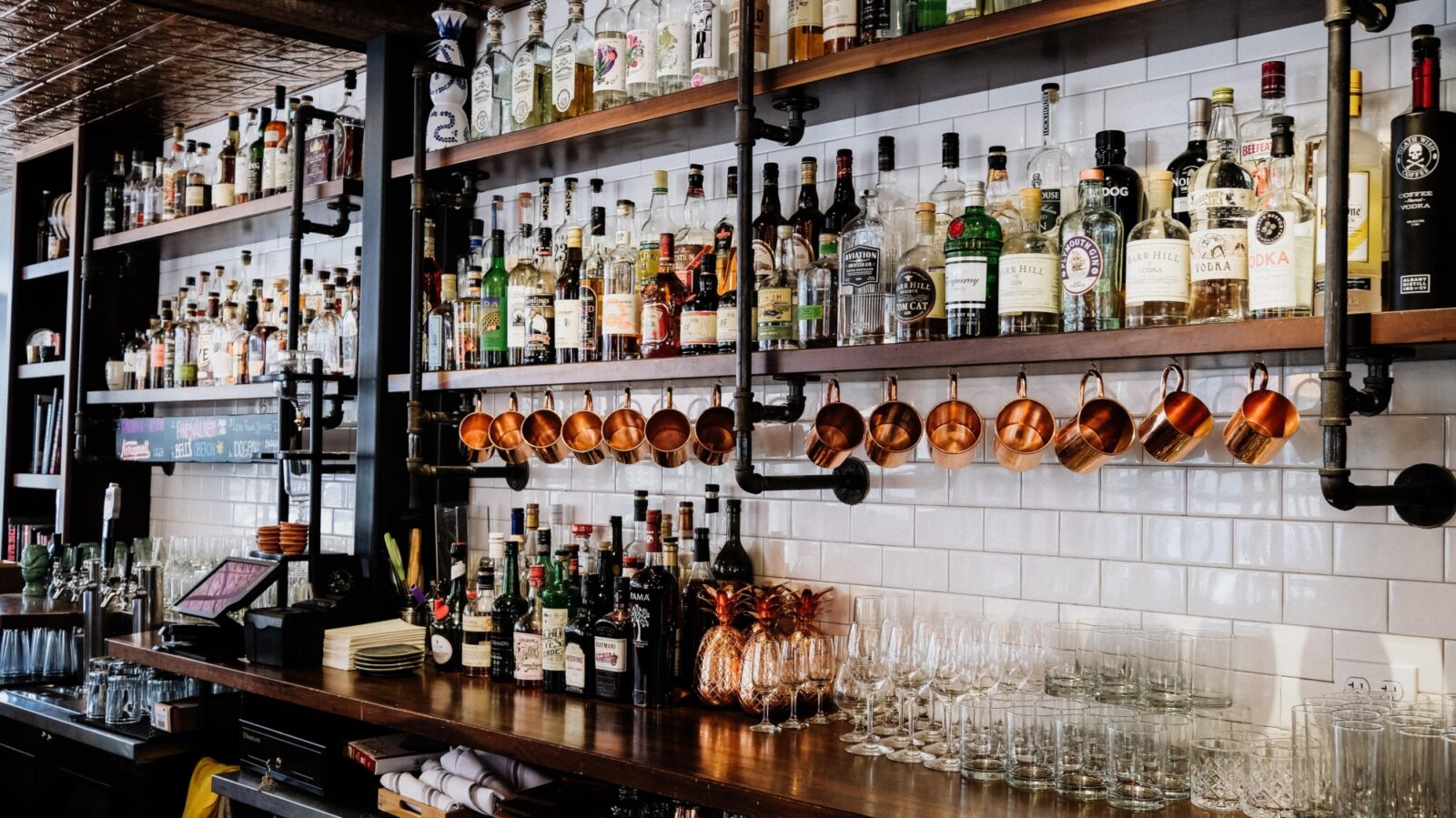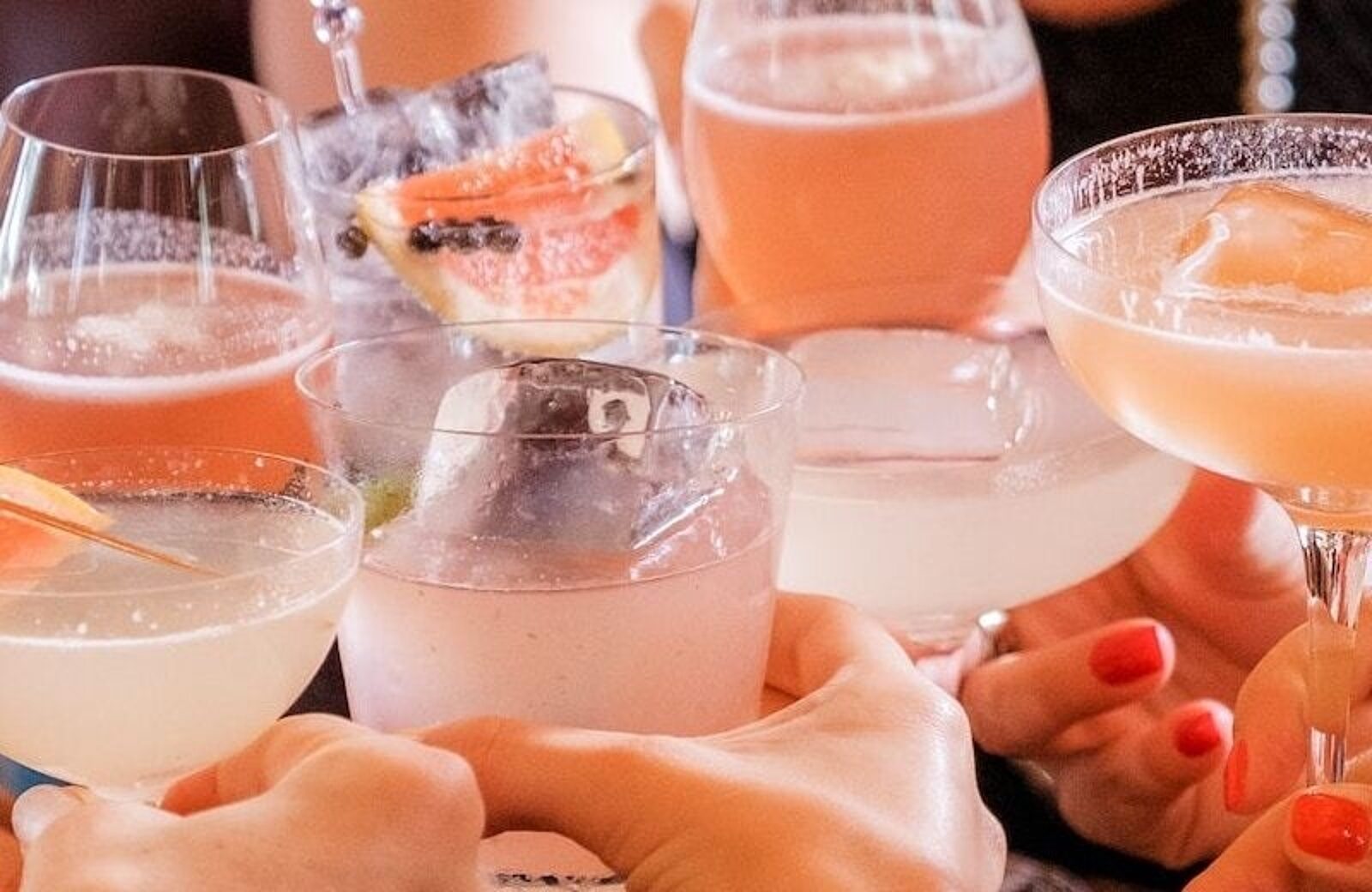
Essential Cocktail Bar Equipment List: Equipment Needed to Start a Cocktail Bar (2024)
Want to open a cocktail bar? Here’s the comprehensive list of essential bar equipment you’ll need to get started.

Nick PerryAuthor


Bar Equipment Checklist
Opening or upgrading a bar? Don't miss any essential equipment! Download our free, comprehensive Bar Equipment Checklist.
Get free downloadMany people dream of opening a bar, but there’s a lot more to it than a clever idea and setting up shop. You’ve probably heard the term “a carpenter is only as good as their tools.” The same concept applies to bartending. While some types of bars don’t require high-end tools, if you want to run a cocktail bar, you will need high-quality cocktail bar equipment.
The right cocktail bar tools will give you greater license in the drinks you can create for your menu. Good equipment can also empower your staff, helping a mixologists strengthen their expertise. Not to mention, cocktail bar equipment sets the tone of the style and ambiance of the bar.
In this article, you will learn the essential cocktail bar equipment you need to get your bar off and running.
Bar Menu Templates
Use these bar menu templates as a starting point for your menu design or to give your menu a refresh.

Ultimate Cocktail Bar Equipment List
On a night out, you’ve probably seen bartenders use some interesting tools. Still, you need a concrete list to ensure your bar shines just as bright. Before you go to the bar supplier, review and keep this ultimate list of cocktail bar equipment in your back pocket.
Cocktail Bar Equipment
Ice Machines
Most cocktails are served cold, while many are served frozen. That said, you need a solid ice machine to meet your customers’ demands for ice-cold drinks. When choosing an ice machine, consider its production capacity, ice type, and storage capabilities to guarantee it’s right for your space.
Blenders
Speaking of ice, you’ll need a powerful blender to make frozen and blended drinks like margaritas and daiquiris. The average home blender isn’t the blender for a cocktail bar. Make sure you shop for commercial options. There are blenders made specifically for cocktails that are quite impressive.
Refrigeration
A great refrigerator is essential equipment for any restaurant or bar. Even if you don’t serve food at the cocktail bar, you’ll need proper refrigeration for storing syrups, garnishes, mixers, and other drink ingredients.
You may want refrigeration units under the counter, behind the bar, or to set up operations at multiple bars. Reach-in coolers, back bar coolers, and walk-in refrigerators are worth considering, depending on your space’s layout.
Cocktail Bar Supplies
Shakers
Sure, you’re a mover and shaker opening up a cocktail bar, but you’ll need a great shaker in your bar supplies kit.
There are three types of cocktail shakers: the Boston, the Parisian (or French), and the Cobbler. The Boston shaker features two mixing glass-sized metal tins or one metal tin and one mixing glass. They don’t have a strainer, so you must seal the shaker by fitting the two rims inside each other. When you pour, you need a separate strainer. The Parisian is similar; however, it features a signature hourglass shape. Both shakers are preferred in cocktail bars and other commercial settings. The Cobbler - on the other hand - is more of an at-home shaker due to its all-in-one construction, with a strainer and metal cap.
Countless brands make shakers and cocktail kits. Some industry leaders producing excellent shakers are Tovolo, Oggi, Barfly, Tablecraft, and Cocktail Kingdom.
Jiggers
Jiggers come in more shapes, sizes, and varieties than shakers, making it more difficult to pin down exactly what you want for your cocktail bar.
A jigger is a tool that helps you accurately and consistently measure cocktail ingredients. They’re like measuring cups for bartenders and are probably the most important tool behind the bar.
There are various kinds of jiggers, including multi-level jiggers, measuring cup jiggers, Japanese precision jiggers, and vintage jiggers. There’s a lot to learn about jiggers, but what makes them so essential is that they facilitate consistency across the menu and staff. As long as bartenders know how many parts of each ingredient go in a drink, they’ll know the right jigger to use. Knowing the recipe and having the right jigger will prevent making the drink too weak or strong and, above all, ensure you can keep proper track of inventory.
Strainers
Like shakers, there are three types of strainers: the Hawthorne, the Julep, and a fine mesh strainer.
The Hawthorne is the most common strainer at cocktail bars, in part because it fits well with a Boston shaker. It’s most noticeable by its trademark metal coil, which traps pulp and ice.
The Julep resembles a large spoon with small holes that allow liquid to pass through. You insert it in a glass slightly at an angle as you pour and it strains out pulp and ice. It’s a bit slower than the Hawthorne, making it slightly less common at cocktail bars.
Finally, a fine mesh strainer is used to finish a cocktail when you want to ensure the clarity of the drink. This tool is called a double strain and is only used after straining through a Hawthorne or Julep first.
Bar Spoons and Muddlers
Bar spoons and muddlers are even more diverse than jiggers. You can find all kinds of shapes, sizes, and styles. When picking out this equipment, it’s really about finding something that matches the aesthetic of your bar while also remaining practical.
Bar spoons have a wide range of uses, including:
Cocktail stirring
Measuring ingredients
Layering drinks
Garnishing drinks
Muddling
The three basic types are the American, the European, and the Japanese. They’re distinguishable by their caps and design. The American has a red cap, the European a disc cap, and the Japanese a more elongated teardrop cap.
Like muddlers, the decision comes down to design and practicality. It’s a good idea to try a few to figure out what will work best for the cocktails on your menu.
Mixing and Serving Glasses
There are many types of mixing and serving glasses in the cocktail world. Many glasses get their names from the cocktail they’re most associated with. Even then, there are myriad designs within the design. Again, mixing and serving glasses will come down to the aesthetic of your bar.
The reality is - glassware tends to break. When deciding on the glassware in your cocktail bar, consider its durability and cost. Ordering glassware in bulk is always a good idea. Remember, you don’t need specific glassware for every type of drink. At the end of the day, it all comes down to personal choice.
Some of the most common types of cocktail glassware are:
Highball glass
Collins glass
Zombie glass
Rocks glass
Coupe glass
Martini glass
Copper mug
Margarita glass
Hurricane glass
Bottle Openers
The most common type of bottle opener you see at home is the crown cork opener. This basic opener has a rectangular or round opening on one end of a piece of metal and a large enough slab to be gripped between the thumb and forefinger on the end. Many bars use these.
More commonly at bars are speed openers or bar blades. They have a thumb hole at one end and a letterbox cut at the other which enables the bartender to pull beer bottles out of ice and pop caps off rapidly. They offer a little more flair than the average crown cork opener.
There are also myriad wine openers on the market, from corkscrews and multi-openers to electric wine openers. Depending on the beverages you’re selling at your cocktail bar, you may prefer to choose openers based on their design rather than maximizing efficiency with a bar blade and electric openers.
Citrus Juicers and Zesters
While juice tools are more essential to juice bars, they’re still crucial at cocktail bars. How else are you going to add those fancy garnishes and some extra zest to your drinks? Citrus is an easy way to incorporate flavor and refreshment to cocktails while also putting your unique spin on traditional drinks.
Different brands have different designs for juicers and zesters. Ultimately, you want tools that can zest fruits (like lemons, limes, and oranges) and squeeze the juice out efficiently. Some tools can even do both. There are electric juicers on the market; however it’s probably best to get separate juicers and zesters.
Ice Tools
Sure, you have an ice maker. Still, you need a way to make ice independently of the ice machine. Trays, crushers, and molds allow you to work with ice in creative ways, adding more flair and style to cocktails.
Bar Equipment Checklist
Opening or upgrading a bar? Don't miss any essential equipment! Download our free, comprehensive Bar Equipment Checklist.

Cocktail Bar Technology
These days, restaurant technology is streamlining operations and making it easier for restaurant managers to take care of business. Some reliable technologies you should invest in for your cocktail bar include:
Point of sale (POS) system: A POS system is where bartenders and servers manage customer orders and close out tabs. A quality POS system allows bartenders to serve customers and turn tables efficiently.
Reporting and analytics: Any business needs quality data management these days. Reporting and analytics tools help you understand exactly how the business is working. Quality reporting tells you what menu items are selling well (and what’s not doing so well) guiding important changes to pricing, the menu, and other business decisions.
Inventory management: Food and drink both have expiration dates. While alcohol has a longer shelf-life, you still need quality inventory management to ensure you have backups when items run low and you’re not overstocked on ingredients that could go bad and cost you money.
Payroll and team management: Staffing a bar is complicated. You need bartenders, barbacks, hosts, waiters, and potentially a back-of-house. Making sure you have the right staff scheduled and everyone gets paid on time is easier with payroll and team management software.
Things to Consider Before Purchasing Cocktail Bar Equipment
There’s a lot of cocktail bar equipment to purchase, and you don’t want to rush into it. When you’re making final decisions on equipment, consider the following.
Quality
Save the budgeting for home supplies. Cocktail bars are generally somewhat fancier establishments. Your cocktail bar equipment should reflect that. You don’t have to get the absolute top-of-the-line equipment, but you should invest in quality equipment that will last and convey an appropriate level of style and sophistication.
Space Considerations
Every space is different. No matter what, mastering your bar layout is crucial. If you’re opening a bar, figuring out the blueprint is something you should do before investing in cocktail bar equipment. The space will dictate how much storage you have, where larger equipment should go, and how to make equipment as accessible as possible.
Pricing
As we mentioned, you don’t have to invest in top-of-the-line items. The key is to find quality, durable equipment that meets your aesthetic at the right price point. There are many bar suppliers out there so don’t be afraid to shop around to find the right one for your business.
Ease of Use
Professional bartenders tend to use Boston shakers and Hawthorne strainers because they’re easier to use at scale. This is the kind of thing you need to consider when you’re buying equipment. Bar staff will use these tools repeatedly on any given night, which means you want tools that are both easy to use and clean so they can be put back into action quickly. (And nobody has to spend hours cleaning up after closing time.)
New vs. Used
Customers will not know if your bar has used restaurant equipment, and it won’t make any difference to them if they do. That’s because most cocktail bar equipment is simple to clean and highly reusable. This goes for bar tools, ice machines, glassware, and more. That means it's not difficult to find cocktail bar equipment in excellent condition. So, finding used equipment you need from a wholesaler could save a lot of money.
Nevertheless, all equipment breaks down eventually. To avoid replacing equipment anytime soon, it may be best to buy new equipment. A good compromise may be to buy brand new versions of larger, more essential equipment like refrigeration or ice machines and look into buying used equipment for smaller items like glassware and bar tools.
Buying vs. Leasing
For larger items, you should consider leasing rather than buying to save some money in the short term. Leasing equipment allows you to incorporate equipment as a fixed cost to your monthly budget and likely gives you access to a warranty or maintenance plan that could provide additional value.
Buying equipment outright ensures you don’t have to pay a monthly fee for the equipment, though you are solely responsible for maintenance costs.
***
From bartending tools to technology and beyond, there’s a lot of essential cocktail bar equipment that you need to consider before opening. This list will help you keep tabs on what you have and may need so you can hit the ground running on opening day.
Is this article helpful?
DISCLAIMER: This information is provided for general informational purposes only, and publication does not constitute an endorsement. Toast does not warrant the accuracy or completeness of any information, text, graphics, links, or other items contained within this content. Toast does not guarantee you will achieve any specific results if you follow any advice herein. It may be advisable for you to consult with a professional such as a lawyer, accountant, or business advisor for advice specific to your situation.
Read More
Subscribe to On the Line
Sign up to get industry intel, advice, tools, and honest takes from real people tackling their restaurants’ greatest challenges.



